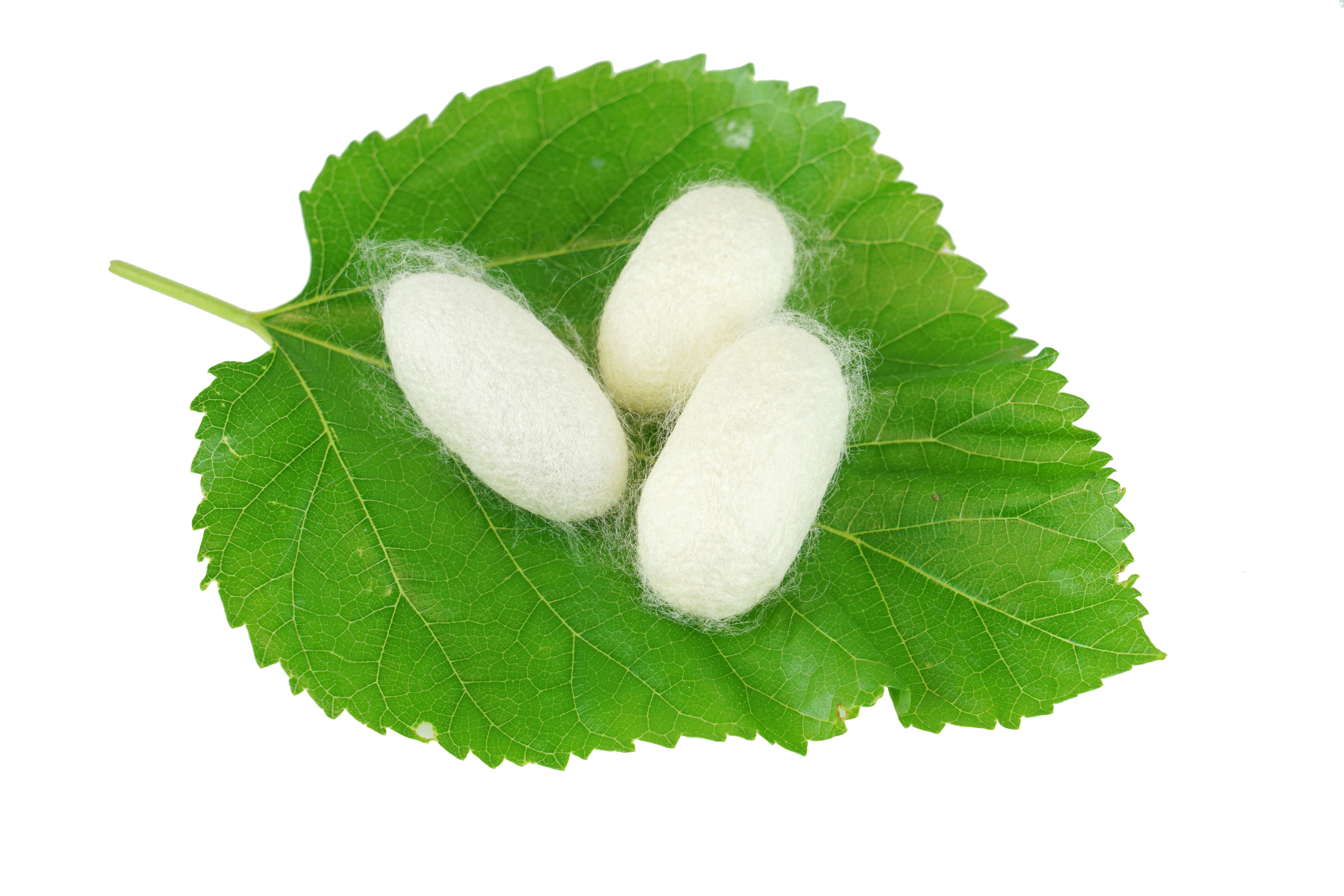Diseased Silkworms Screened Using Portable NIR Spectroscopy
Scientists from the Jiangsu University of Science and Technology in Zhenjiang, China recently tested different analysis methods of using portable near-infrared (NIR) spectroscopy to detect Bombyx mori nuclear polyhedrosis virus within silkworms. Their findings were published in Spectrochimica Acta Part A: Molecular and Biomolecular Spectroscopy (1).
silkworm cocoon on green mulberry leaves | Image Credit: © nd700 - stock.adobe.com

Raw silk production accounts for 82% of the world’s sericulture production. This process occurs when silkworms spin themselves into a cocoon, with the ultra-soft fibers being harvested from the cocoon in their raw state by being boiled in hot water and stirred until the cocoons unravel (2). However, this process has several problems to it, one of which being that silkworms can be easily infected by viruses. The most common and harmful virus that affects silkworms is Bombyx mori nuclear polyhedrosis virus (BmNPV). For early BmNPV diagnosis, conventional methods rely on human senses, which are highly sensitive to subjective influence that can lead to low accuracy. Alternate methods have been created for this purpose, such as the anti-viral antibody-based ELISA and nucleic acid probes; however, while highly sensitive, they can be high-cost, time-consuming, and labor-intensive. As such, fast, accurate, and effective early diagnosis methods are still needed.
For this study, a portable near-infrared (NIR) spectroscopy system was used to collect the spectra of normal silkworms and the infected silkworms induced by BmNPV administration. Unlike traditional NIR spectrometers, portable NIR spectrometers can perform on-site analysis without needing to transport samples back to a laboratory, which improves work efficiency and saves both time and money.
Various spectral methods were applied for the classification analysis; principal component analysis (PCA), linear discriminant analysis (LDA), and partial least squares discriminant analysis (PLSDA) were used. However, PCA and LDA were unable to achieve accurate classification results.
For the PLSDA calibration, after spectra pretreatment using a standard normal variate (SNV) transformation combined with second derivative, the technique yielded a highly accurate identification performance. The PLSDA approach resulted in low classification errors of 0.023, 0.033, and 0.030 for the calibration set, cross-validation set, and test set, respectively. To summarize these results, misclassification occurred 2.3% of the time for the calibration set; 3.3% of the time for the cross-validation set; and 3.0% of the time for the test set. All these factors were captured with higher sensitivity and specificity. These findings allowed scientists to identify BmNPV-infected silkworms using portable NIR spectroscopy; though there is more research to be done in this regard, this method has the potential to effectively reduce losses for the sericulture industry.
References
(1) Liu, Y.; Deng, S.; Li, Y.; Zhang, Y.; et al. Fast Identification of the BmNPV Infected Silkworms by Portable NIR Spectroscopy and Chemometrics. Spectrochim. Acta Part A: Mol. Biomol. Spectrosc. 2024, 314, 124158. DOI: https://doi.org/10.1016/j.saa.2024.124158
(2) Jackson, F. How Is Silk Made, And Is It Vegan? Allplants Ltd 2024. https://allplants.com/blog/lifestyle/how-is-silk-made-and-is-it-vegan (accessed 2024-4-8).
Newsletter
Get essential updates on the latest spectroscopy technologies, regulatory standards, and best practices—subscribe today to Spectroscopy.
How Analytical Chemists Are Navigating DOGE-Driven Funding Cuts
July 14th 2025DOGE-related federal funding cuts have sharply reduced salaries, lab budgets, and graduate support in academia. Researchers view the politically driven shifts in priorities as part of recurring systemic issues in U.S. science funding during administrative transitions. The impact on Federal laboratories has varied, with some seeing immediate effects and others experiencing more gradual effects. In general, there is rising uncertainty over future appropriations. Sustainable recovery may require structural reforms, leaner administration, and stronger industry-academia collaboration. New commentary underscores similar challenges, noting scaled-back graduate admissions, spending freezes, and a pervasive sense of overwhelming stress among faculty, students, and staff. This article addresses these issues for the analytical chemistry community.